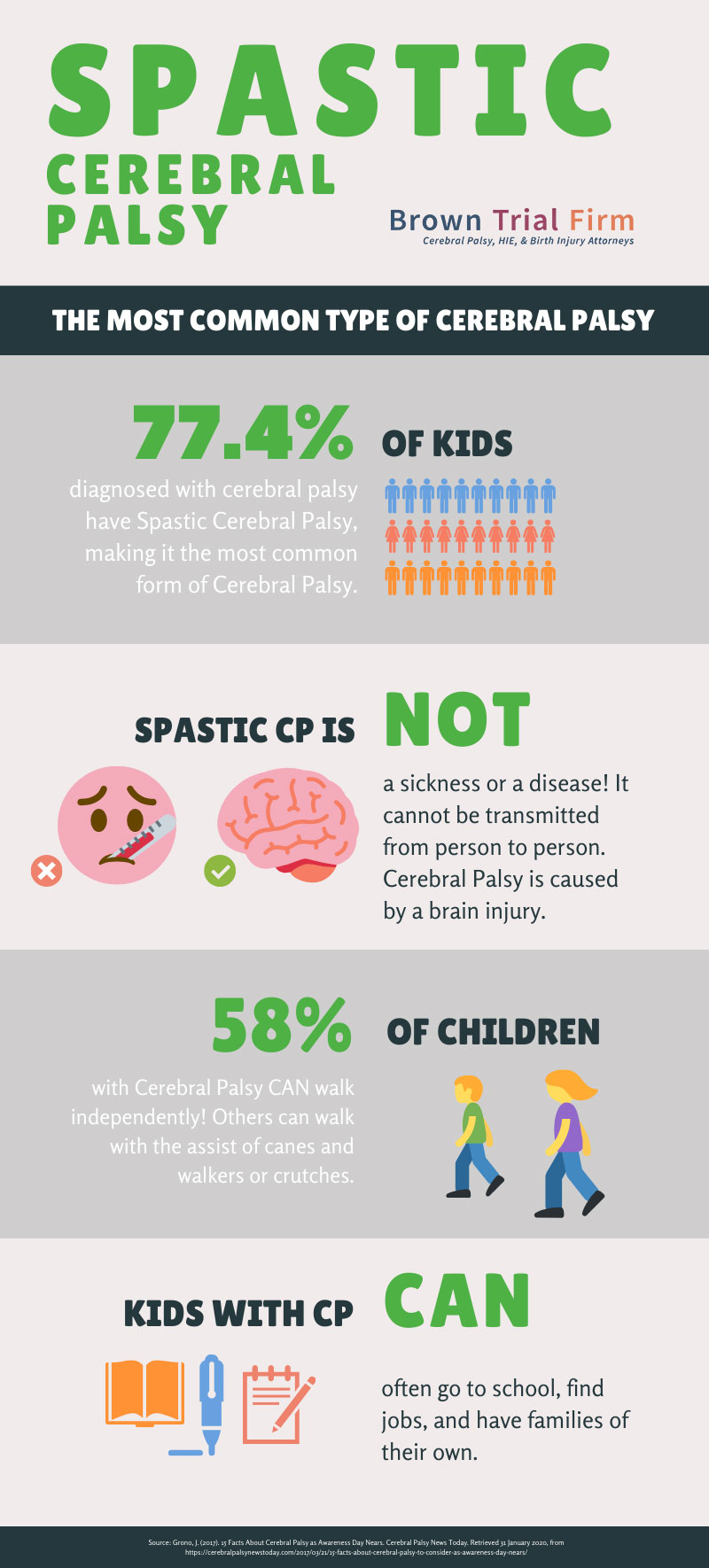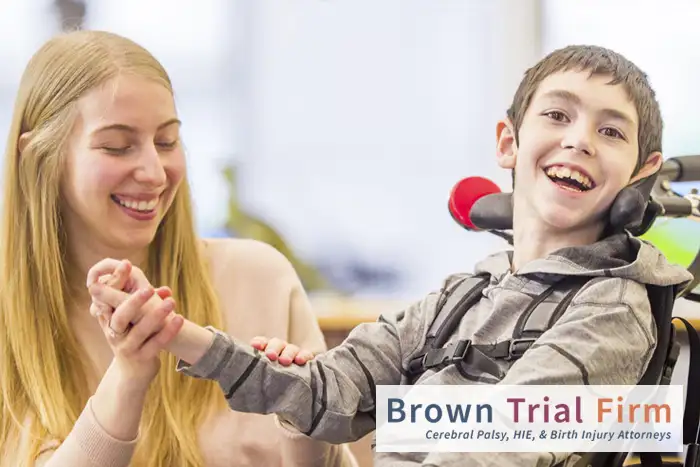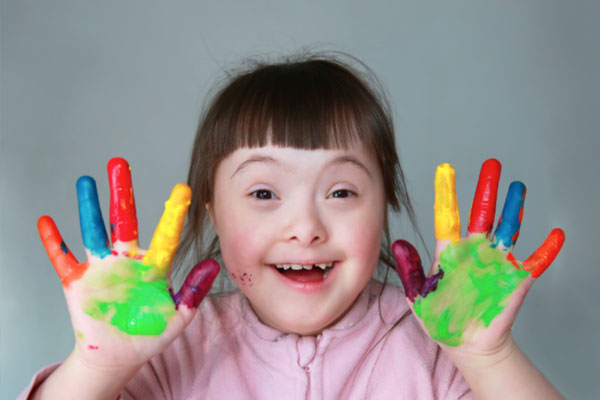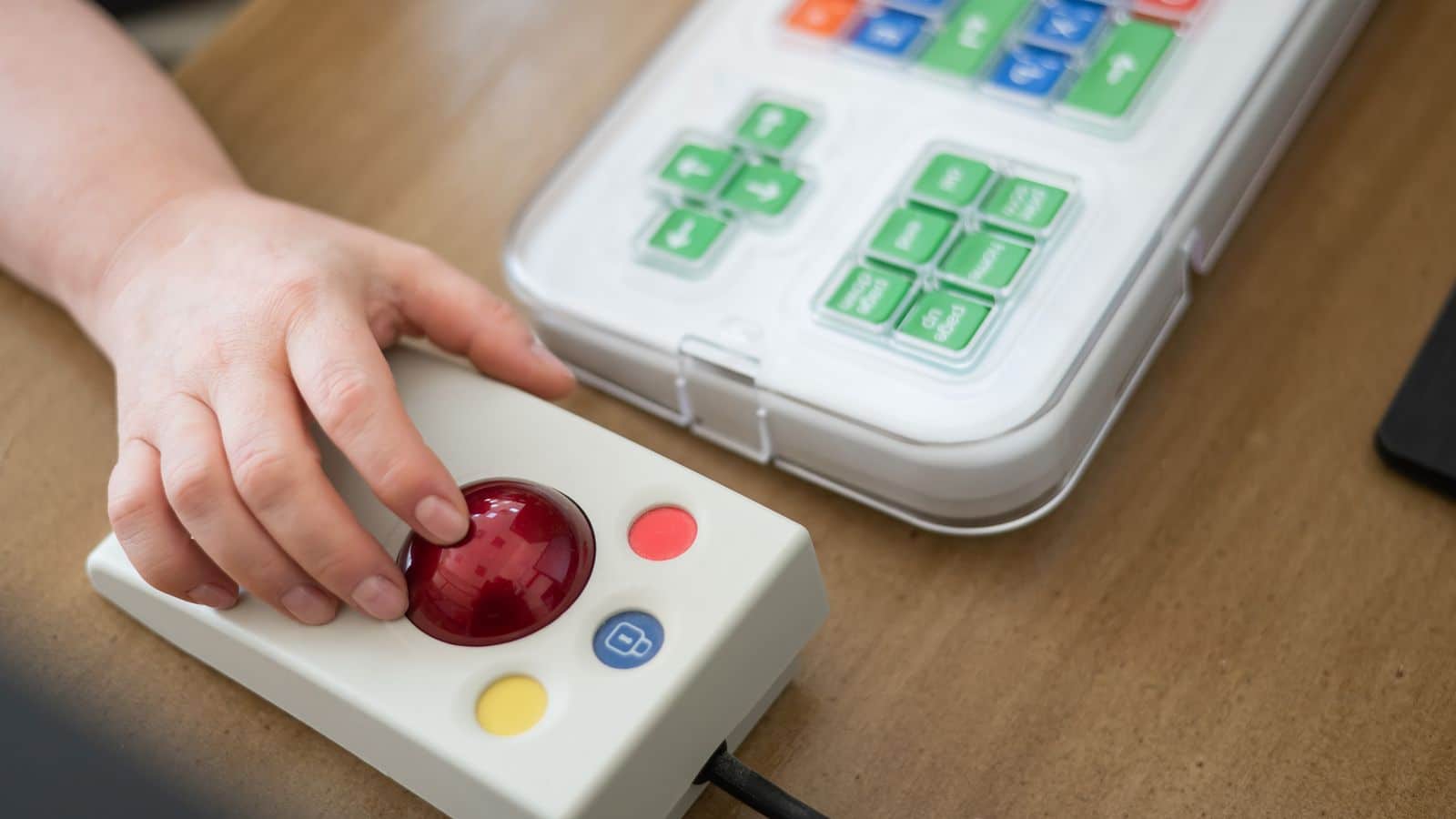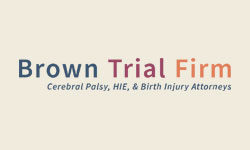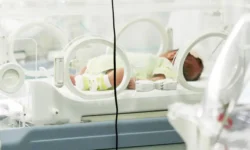Spastic Cerebral Palsy
What is spastic cerebral palsy?
Spastic cerebral palsy is a neurological disorder affecting movement, muscle tone and coordination that results from brain damage before, during or shortly after birth. It causes the muscles to be stiff and tight, which can make movements like walking or grasping objects difficult.
Spastic cerebral palsy can affect different parts of the body and is classified according to which area(s) are affected:
- Spastic diplegia. This type primarily affects the legs, leading to muscle stiffness, difficulty walking, and a tendency to walk on tiptoes due to tight muscle tone in the lower body.
- Spastic hemiplegia. This form involves muscle stiffness and weakness on one side of the body, often impacting the arm more than the leg on the affected side.
- Spastic quadriplegia. The most severe form, it affects all 4 limbs, the trunk, and the face, often leading to significant motor disabilities and possibly impacting speech, vision and intellectual abilities.
77.4% Of Kids
diagnosed with cerebral palsy have spastic cerebral palsy, making it the most common form of cerebral palsy.
Spastic CP Is Not
a sickness or a disease! It cannot be transmitted from person to person. Cerebral palsy is caused by a brain injury.
58% Of Children
with cerebral palsy CAN walk independently! Others can walk with the assist of canes and walkers or crutches.
Kids With CP Can
often go to school, find jobs, and have families of their own.
Source:
Grono, J. (2017). 25 Facts About Cerebral Palsy as Awareness Day Nears. Cerebral Palsy News Today. Retrieved 31 January 2020, from https://cerebralpalsynewstoday.com/2017/03/21/15-facts-about-cerebral palsy-to-consider-as-awareness-day nears/
What is the difference between cerebral palsy and spastic cerebral palsy?
Cerebral palsy (CP) is a general term for a group of neurological disorders that affect movement, muscle tone and posture caused by damage to the brain before, during, or shortly after birth. Symptoms can range from mild to severe and include muscle weakness, poor coordination, tremors, and problems with sensation, vision, hearing, swallowing and speaking.
Cerebral palsy can be separated into different types according to the movement disorder that results. They include:
- Dyskinetic cerebral palsy (characterized by involuntary movements)
- Ataxic cerebral palsy (characterized by problems with balance and coordination)
- Spastic cerebral palsy (characterized by muscle stiffness)
While cerebral palsy refers to the overall condition affecting movement and coordination, spastic cerebral palsy specifically refers to the type of cerebral palsy where the predominant symptom is muscle stiffness and spasticity in the muscles from prolonged contraction.
Learn the truth about these top cerebral palsy myths.
What is the most common characteristic of spastic cerebral palsy?
The most common characteristic of spastic cerebral palsy is increased muscle tone, also known as spasticity. This results in stiff and tight muscles, which can lead to contracted muscles and difficulty in movement and coordination.
What are the symptoms of spastic cerebral palsy?
It’s important to understand that the signs and symptoms of spastic cerebral palsy can vary depending on the region of the body affected and the severity of the disorder. However, some common signs of spastic cerebral palsy in infants and older babies include:
- Muscle stiffness or tightness. Infants with spastic cerebral palsy exhibit increased muscle tone. This stiffness is particularly noticeable during activities like changing diapers or clothing, as the infant’s limbs may resist movements that are typically easy for other babies.
- Delayed developmental milestones. Babies with this condition may show delays in reaching developmental milestones, such as rolling over, sitting up, crawling or walking, compared to their peers.
- Favoring one side of the body. An observable sign can be the baby consistently using one hand while keeping the other hand in a clenched fist or favoring one side of the body over the other.
- Abnormal posture. Affected infants might adopt unusual postures or positions due to muscle stiffness and difficulty controlling their movements.
- Feeding difficulties. Challenges with feeding are common, including difficulties with sucking, swallowing, and frequent gagging or choking during feedings.
- Excessive irritability or crying. Babies with spastic cerebral palsy may exhibit higher levels of irritability or cry more frequently, which can be a sign of discomfort or distress caused by muscle stiffness and other related issues.
- Reduced movement. There may be less movement or limited mobility in the limbs compared to typically developing infants, as the muscle stiffness can restrict free movement.
- Developmental delays. Beyond physical milestones, there can be slower progress in other developmental areas, such as speech, social skills and cognitive abilities.
Can people with spastic cerebral palsy talk?
Many people with spastic cerebral palsy can talk, but the extent to which they’re able to do so can vary widely depending on the individual case.
Since spastic cerebral palsy affects muscle tone and control, individuals with more severe muscle stiffness in the face and throat may have more difficulty speaking, leading to slower or slurred speech.
Additionally, some people with spastic cerebral palsy might also have other conditions that affect their ability to speak, such as intellectual disabilities or hearing impairment.
Fortunately, speech therapy and other supportive interventions have been shown to significantly help improve speech and communication skills in affected individuals when started at an early age.
In cases where verbal communication is challenging, many individuals with spastic cerebral palsy use alternative forms of communication, such as sign language, communication boards or speech-generating devices.
Learn about primary conditions, secondary conditions, associative conditions, and co-mitigating factors for CP.
What is the most effective treatment for spasticity?
There is no single effective treatment for cerebral palsy spasticity that works for everyone. Treatment recommendations and effectiveness will vary depending on the severity of spasticity, the affected areas of the body, and the overall health and needs of the person, but some treatments that may be helpful in reducing spasticity and improving comfort and mobility include:
- Physical therapy. Physical therapy can help improve strength, flexibility, and mobility and reduce the effects of spasticity over time.
- Medications. Certain medications, like muscle relaxants and anticonvulsants, have been shown to reduce muscle stiffness and spasms in some people with spastic CP. Botox injections are also sometimes used to temporarily weaken spastic muscles and can be effective in targeted areas.
- Intrathecal baclofen therapy. This involves delivering the muscle relaxant baclofen directly to the spinal fluid via a pump that is surgically placed in the abdomen, which can be particularly effective for severe spasticity.
- Assistive devices. Braces, splints, and other devices can help in managing spasticity and improving mobility or function.
- Occupational therapy. This type of therapy focuses on improving fine motor skills and the ability to perform daily activities.
- Selective dorsal rhizotomy. This is a surgical procedure in which a surgeon cuts some of the sensory nerve fibers that connect the muscles to the spinal cord. This surgery can help reduce spasticity in individuals with severe leg spasticity, thereby improving mobility, reducing pain, and enhancing the ability to perform daily activities.
- Tendon surgery. This surgical procedure involves lengthening, releasing or transferring tendons to alleviate muscle tightness and improve joint mobility. This type of surgery can help reduce spasticity, correct muscle imbalances, and enhance overall function and ease of movement.
The effectiveness of these surgical options treatments can vary widely among individuals, and often, a combination of therapies is used for optimal results. It’s important for treatment to be tailored to the individual’s needs and regularly reviewed by health care professionals.
What is the life expectancy of someone with spastic cerebral palsy?
The life expectancy of someone with spastic cerebral palsy can vary significantly depending on the severity of the condition and the presence of associated health issues. Many individuals with spastic cerebral palsy have a normal or near-normal life expectancy, especially those with milder forms of the condition who do not have significant health complications.
However, for those with more severe forms, especially spastic quadriplegia, the life expectancy may be shorter due to associated health problems such as respiratory issues, feeding difficulties and severe motor impairments. The presence of additional conditions, like severe intellectual disabilities or epilepsy, can also impact life expectancy.
Overall, advances in medical care, including better management of spasticity and associated conditions, as well as improved general health and wellness care, have led to increased life expectancies for individuals with cerebral palsy over recent decades, making it crucial for individuals with spastic cerebral palsy to receive regular medical care tailored to their specific needs to optimize their health and quality of life.
Learn how adaptive equipment and assistive technology can improve the lives of kids with cerebral palsy and other birth injuries.
Getting help for a child with cerebral palsy
can make a big difference
The reality is that many birth injuries that cause cerebral palsy could have been prevented. Because early intervention is often key to helping improve a child’s wellbeing, it’s important to act swiftly if you believe your child’s cerebral palsy may have been caused by a medical mistake.
At Brown Trial Firm, our Houston birth injury attorneys can answer your questions, investigate your case, and help determine if your child may be entitled to compensation to pay for the medical treatment and care they need to live their life to the fullest.
